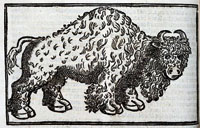Freedmen's Bureau Online

The Bureau of Refugees, Freedmen, and Abandoned Lands, also known as the Freedmen's Bureau, was established by the War Department in 1865 to supervise all relief and education activities for refugees and freedmen after the Civil War. The Bureau was responsible for issuing rations, clothing, and medicine, and had custody of confiscated lands in the former Confederate states and other designated territories. This website contains an extensive collection of Freedmen's Bureau records and reports.
Included are more than 100 transcriptions of reports on murders, riots, and "outrages" (any criminal offense) that occurred in the former Confederate states from 1865 to 1868. There are also 30 links to records and indexes of labor contracts between freedmen and planters between 1865 and 1872; seven links to related sites; six links to marriage records of freedmen, 18611872; and more than 100 miscellaneous state record items concerning freedmen.
